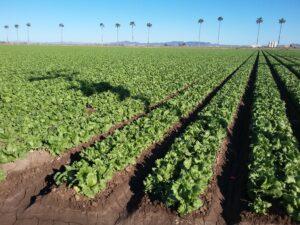
Photo Credit: University of Arizona Cooperative Extension
As regular readers know, water is a subject that we frequently write about; we don’t think we need to explain the importance of it to us. While the Rio Verde Foothills seems to be mostly behind us at this point, water levels at Lake Mead and Lake Powell are ever-present concerns in our slice of desert heaven (we recommend reading our most recent piece about water levels here).
In that piece we speculated what may be the first shoe to drop when it comes to water cutbacks, and this most recent piece confirms our concerns: farming is now imperiled in Arizona.
For those of us who live in the city, it is easy to forget how critical the farming industry is in Arizona and how much of an economic driver it is, but one need only look at the vaunted “5 C’s” of our state and see that two of them (citrus and cotton) are directly tied to farming, and a third (cattle) is tangentially related. The industry is estimated to be worth $23.3 billion and is responsible for 138,000 jobs, underscoring its critical importance to the state.
So how much of a water hog is our agricultural sector? Frankly, it’s a shockingly big one; as of 2019, it represented a staggering 72% of water use in our state. On a positive note, a small cutback in agricultural use will represent a major savings of water, but with it comes a major economic impact as well.
Farmers are now allowing portions of the fields to lay fallow, which may introduce another longer-lasting issue; bringing that land back into usage later. Even with an above-average year or two of water flow, bringing fallowed land back to life will be even more water-intensive, This could start a negative cycle of more and more land left to dry, further diminishing agricultural output as years go by.
A positive aspect of this? While it is difficult to find any, it should be noted that usage that is often considered wasteful, golf courses, is typically seen as a more efficient use of water than agricultural uses. Ergo, golf courses might be one of the last uses of water to be cut, therefore protecting our tourism sector. However, that’s a hollow positive.
Meanwhile, all we can do now is cross our fingers and pray for rain. Without a significant reversal in our drought supercycle, worse days lay ahead.

